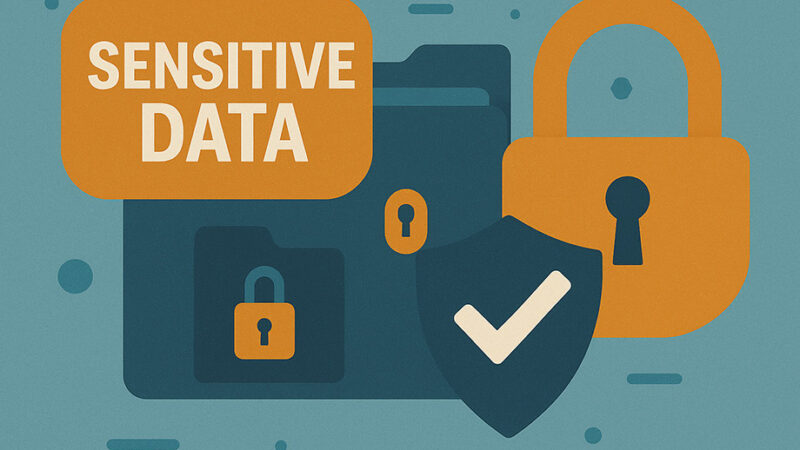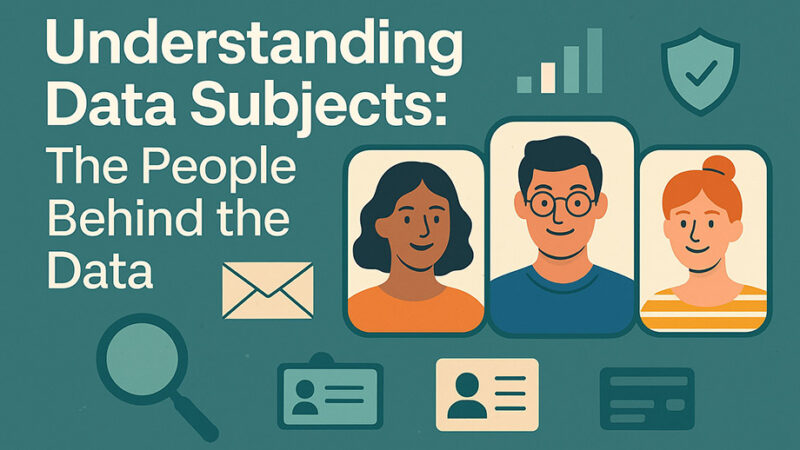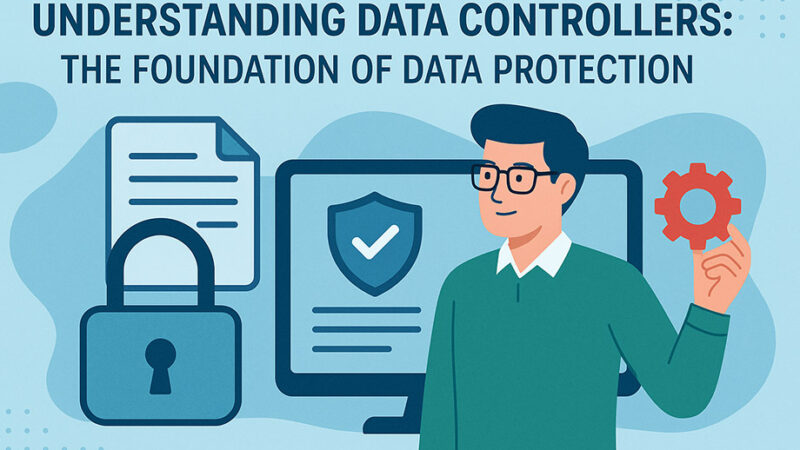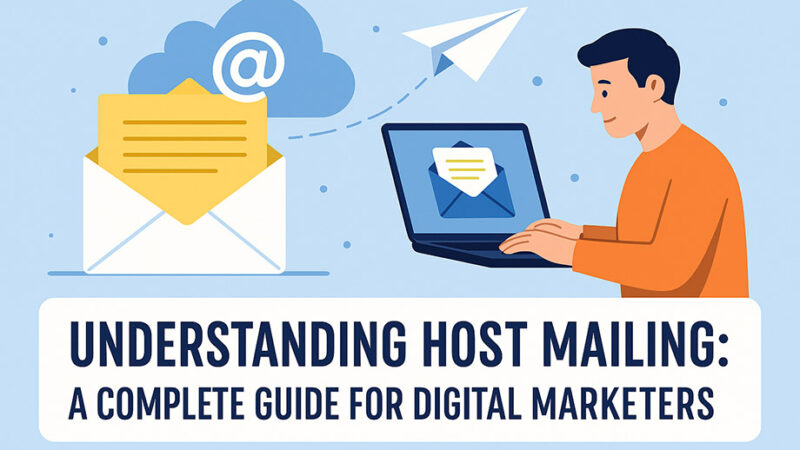Understanding Data Processors: The Supporting Role in Data Protection
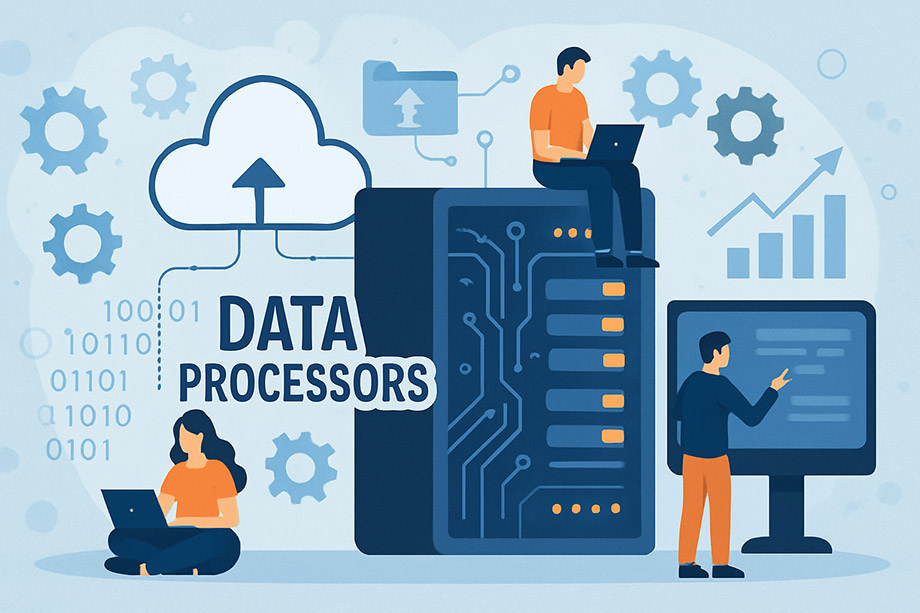
In the complex ecosystem of data protection and privacy law, organizations rarely operate in isolation when handling personal data. Most businesses rely on external partners, vendors, and service providers to help them process, store, and manage personal information. These external entities play a crucial role known as Data Processors, and understanding their responsibilities and relationships is essential for comprehensive data protection compliance.
What is a Data Processor?
A Data Processor is any person (other than an employee of the Data Controller) who processes data on behalf of the Data Controller. This definition establishes a clear distinction between internal operations and external partnerships, highlighting that data processors are third-party entities that handle personal data under the direction and authority of the data controller.
The key elements of this definition include:
External Entity: The processor must be separate from the data controller’s organization, not an internal employee or department.
Processing on Behalf: The processor acts under the instructions and authority of the data controller, not for their own purposes.
Contractual Relationship: The arrangement is typically formalized through data processing agreements that define roles, responsibilities, and obligations.
Limited Autonomy: Processors cannot determine the purposes of processing or make independent decisions about how personal data is used.
The Controller-Processor Relationship
Hierarchical Structure
The relationship between data controllers and processors follows a hierarchical model where:
Data Controller: Sits at the top, determining the purposes and essential means of processing personal data. They bear primary responsibility for compliance with data protection laws.
Data Processor: Operates under the controller’s instructions, providing services that involve processing personal data but without independent decision-making authority over the data’s use.
Sub-processors: May be engaged by processors to assist with specific tasks, creating a chain of processing relationships that must be properly managed and documented.
Instruction-Based Processing
Data processors must operate strictly within the bounds of documented instructions from the data controller. These instructions typically cover:
- What personal data can be processed
- How the data should be handled and stored
- Who can access the data
- How long the data should be retained
- When and how the data should be deleted or returned
- Security measures that must be implemented
- Procedures for handling data subject requests
- Incident reporting and breach notification requirements
Common Examples of Data Processors
Cloud Service Providers
Organizations that provide cloud storage, computing, or software-as-a-service (SaaS) solutions often act as data processors when they:
- Store customer databases in cloud infrastructure
- Provide email hosting and communication services
- Offer customer relationship management (CRM) platforms
- Deliver enterprise resource planning (ERP) systems
- Host websites and applications containing personal data
IT Service Providers
Technology companies providing various IT services, including:
- Data backup and recovery services
- System maintenance and technical support
- Software development and customization
- Database management and administration
- Cybersecurity monitoring and protection services
Marketing and Analytics Companies
Organizations that help businesses understand and reach their customers:
- Email marketing platforms and services
- Social media management tools
- Web analytics and tracking services
- Customer survey and feedback platforms
- Marketing automation systems
Professional Services Firms
Various professional services that involve handling client personal data:
- Accounting and bookkeeping services
- Legal services and law firms
- Human resources and payroll companies
- Consulting firms handling employee or customer data
- Recruitment and staffing agencies
Logistics and Fulfillment Partners
Companies involved in order fulfillment and delivery:
- Shipping and courier services
- Warehouse and inventory management
- Order processing and fulfillment centers
- Returns processing services
Key Obligations of Data Processors
Processing Only on Instructions
Data processors must process personal data only based on documented instructions from the data controller. They cannot:
- Use the data for their own purposes
- Process data beyond the scope of instructions
- Make independent decisions about data use
- Share data with unauthorized third parties
- Retain data longer than instructed
Security Measures Implementation
Processors must implement appropriate technical and organizational security measures, including:
Technical Safeguards:
- Encryption of personal data in transit and at rest
- Access controls and authentication systems
- Regular security monitoring and logging
- Secure data backup and recovery procedures
- Network security and firewall protection
Organizational Measures:
- Staff training on data protection and security
- Clear policies and procedures for data handling
- Regular security audits and assessments
- Incident response and business continuity planning
- Background checks for personnel with data access
Breach Notification
Data processors must notify the data controller without undue delay upon becoming aware of a personal data breach. This notification should include:
- Description of the nature of the breach
- Categories and approximate number of data subjects affected
- Categories and approximate number of personal data records concerned
- Likely consequences of the breach
- Measures taken or proposed to address the breach
Sub-processor Management
When engaging sub-processors, data processors must:
- Obtain prior written authorization from the data controller
- Impose the same data protection obligations on sub-processors
- Remain fully liable to the controller for sub-processor performance
- Maintain a list of authorized sub-processors
- Notify controllers of any intended changes to sub-processors
Data Subject Rights Support
Processors must assist data controllers in responding to data subject rights requests by:
- Providing access to relevant personal data
- Implementing technical measures to support rights exercise
- Cooperating with data deletion or rectification requests
- Assisting with data portability requirements
- Supporting objection and restriction requests
Records and Documentation
Data processors must maintain records of processing activities, including:
- Name and contact details of the processor and controller
- Categories of processing carried out for each controller
- Transfers of personal data to third countries
- Description of technical and organizational security measures
Data Processing Agreements (DPAs)
Essential Components
Every controller-processor relationship must be governed by a comprehensive data processing agreement that includes:
Subject Matter and Duration: Clear description of the processing activities and timeline.
Nature and Purpose: Detailed explanation of why the processing is necessary and what it involves.
Types of Personal Data: Specific categories of personal data that will be processed.
Categories of Data Subjects: Identification of whose data will be processed.
Controller Obligations: Specific requirements and instructions from the controller.
Processor Obligations: Detailed responsibilities and commitments of the processor.
Security Measures: Technical and organizational safeguards that must be implemented.
Sub-processing Terms: Conditions and procedures for engaging sub-processors.
Data Transfer Provisions: Requirements for international data transfers if applicable.
Audit Rights: Controller’s right to inspect and audit processor compliance.
Liability and Indemnification: Allocation of responsibility for potential breaches or violations.
Negotiation Considerations
When negotiating DPAs, organizations should consider:
Scope Definition: Clearly define what processing activities are covered and excluded.
Security Standards: Specify minimum security requirements and compliance frameworks.
Location Restrictions: Address where data can be stored and processed geographically.
Incident Response: Define roles and responsibilities during security incidents.
Audit Provisions: Establish reasonable audit rights while protecting business interests.
Termination Procedures: Specify what happens to data when the relationship ends.
Compliance Challenges for Data Processors
Multi-Client Obligations
Processors often serve multiple data controllers simultaneously, creating challenges in:
- Managing conflicting requirements and instructions
- Implementing security measures that satisfy all clients
- Handling overlapping or duplicate personal data
- Maintaining separate audit trails and documentation
- Responding to concurrent data subject requests
International Operations
Global processors face additional complexity when:
- Navigating different data protection laws across jurisdictions
- Implementing appropriate transfer mechanisms for cross-border data flows
- Managing varying security and breach notification requirements
- Adapting to different cultural and legal expectations
- Coordinating with regulators in multiple countries
Technology Evolution
Rapid technological change creates ongoing challenges for processors:
- Adapting security measures to new threats and vulnerabilities
- Implementing new privacy-enhancing technologies
- Managing legacy systems that may not meet current standards
- Balancing innovation with compliance requirements
- Training staff on evolving best practices
Liability and Risk Management
Shared Responsibility Model
While data controllers bear primary responsibility for compliance, processors face their own liabilities:
Direct Processor Liability: Processors can be held directly liable for violations of their specific obligations, such as:
- Processing data beyond controller instructions
- Failing to implement adequate security measures
- Unauthorized disclosure or use of personal data
- Non-compliance with breach notification requirements
Joint Liability: In some cases, controllers and processors may be jointly liable for damages, requiring clear allocation of responsibility in agreements.
Risk Mitigation Strategies
Processors can reduce their risk exposure through:
Comprehensive Insurance: Obtaining appropriate cyber liability and professional indemnity coverage.
Regular Compliance Audits: Conducting periodic assessments of data protection practices and procedures.
Staff Training Programs: Ensuring all personnel understand their data protection obligations and procedures.
Incident Response Planning: Developing and testing procedures for handling security incidents and breaches.
Vendor Due Diligence: Carefully vetting and monitoring sub-processors and technology providers.
Best Practices for Data Processors
Governance and Management
Data Protection Officer: Consider appointing a DPO when required by law or when beneficial for compliance oversight.
Privacy by Design: Incorporate data protection principles into service design and delivery from the outset.
Regular Policy Updates: Keep data protection policies and procedures current with evolving legal requirements.
Executive Oversight: Ensure senior management understands and supports data protection compliance efforts.
Operational Excellence
Clear Communication: Maintain open, transparent communication with data controllers about processing activities and any issues that arise.
Proactive Monitoring: Implement systems to detect and respond to potential compliance issues before they become problems.
Continuous Improvement: Regularly review and enhance data protection practices based on lessons learned and industry developments.
Documentation Management: Maintain comprehensive records of all processing activities, decisions, and compliance measures.
Technology and Security
Regular Security Assessments: Conduct periodic penetration testing and vulnerability assessments.
Encryption Standards: Implement strong encryption for data at rest and in transit.
Access Management: Maintain strict controls over who can access personal data and monitor access patterns.
Backup and Recovery: Ensure secure, tested procedures for data backup and disaster recovery.
Industry-Specific Considerations
Healthcare
Healthcare data processors must comply with specialized regulations like HIPAA in addition to general data protection laws, requiring:
- Enhanced security safeguards for protected health information
- Business associate agreements with specific healthcare provisions
- Audit logging and monitoring of medical record access
- Specialized breach notification procedures
Financial Services
Financial data processors face additional requirements including:
- Compliance with banking and financial regulations
- Enhanced due diligence and know-your-customer procedures
- Specialized security frameworks and certifications
- Regulatory reporting and supervision obligations
Technology Sector
Tech companies acting as processors must navigate:
- Rapidly evolving technological landscapes
- Multiple regulatory frameworks across different markets
- Complex data flows and processing relationships
- High-profile scrutiny from regulators and the public
Future Trends and Considerations
Regulatory Evolution
Data protection laws continue to evolve, with implications for processors:
- Expanded direct liability for processors
- Enhanced transparency and accountability requirements
- Stricter certification and audit requirements
- Greater regulatory enforcement focus on processor compliance
Technological Developments
Emerging technologies present new challenges and opportunities:
- Artificial intelligence and machine learning processing
- Edge computing and distributed data processing
- Quantum computing implications for encryption
- Blockchain and distributed ledger technologies
Market Dynamics
The processor landscape is changing with:
- Increased market consolidation among major processors
- Growing demand for specialized, compliant processing services
- Enhanced due diligence requirements from data controllers
- Rising insurance costs and liability concerns
Conclusion
Data processors play a vital supporting role in the modern data protection ecosystem, enabling organizations to leverage specialized expertise and technologies while maintaining compliance with privacy laws. However, this role comes with significant responsibilities and potential liabilities that must be carefully managed.
Understanding the distinction between controllers and processors, implementing appropriate contractual safeguards, and maintaining robust compliance programs are essential for successful processor relationships. As data protection laws continue to evolve and enforcement increases, the importance of proper processor management will only grow.
Organizations acting as data processors must recognize that their role extends beyond simple service provision to encompass genuine partnership in protecting individual privacy rights. By embracing this responsibility and implementing comprehensive compliance programs, processors can build trust with their clients while contributing to a more privacy-respectful digital economy.
Success as a data processor requires ongoing investment in people, processes, and technology, combined with a genuine commitment to data protection principles. Those who excel in this role will find themselves well-positioned to thrive in an increasingly privacy-conscious marketplace.


